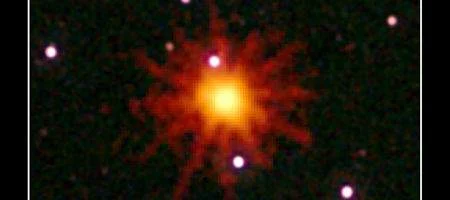Astronomers are poring over data from what they say is one of the most puzzling cosmic blasts ever observed.

They say they’ve never seen such a bright, variable, high-energy, long-lasting burst before. Usually, gamma-ray bursts mark the destruction of a massive star, and flaring emission from these events never lasts more than a few hours.
On Monday, March 28, the Swift satellite’s Burst Alert Telescope discovered the source in the constellation Draco when it erupted with the first in a series of powerful blasts.
Swift pinpointed a location for the explosion, now cataloged as gamma-ray burst (GRB) 110328A. And images taken by Hubble and the Chandra X-ray Observatory on Monday, April 4, showed it was at the center of a small galaxy 3.8 billion light-years away from Earth.
Astronomers previously have detected stars disrupted by supermassive black holes, but none has shown the X-ray brightness and variability of GRB 110328A.
The source has undergone numerous flares. Since Sunday, April 3, it has brightened by more than five times. The astronomers initial theory is that the unusual blast likely arose when a star wandered too close to its galaxy’s central black hole.
Intense tidal forces tore the star apart, and the infalling gas continues to stream toward the hole. According to this model, the spinning black hole formed an outflowing jet along its rotational axis, bringing a powerful blast of X-rays and gamma rays if this jet is pointed in our direction.
Astronomers plan additional Hubble observations to see if the galaxy’s core changes brightness. It’s also under observation by a myriad of other space and ground-based telescopes.






